As a CEO of a time tracking software company I need to know what my competitors are up to. That means I’m often researching about and/or playing around with their products, you know, it’s part of the job. Here, I share my findings of that research, giving credit to those competitors where credit is due and being honest about which products I believe you really need to avoid. And so, there you have it, this review, and in it, I try to be honest, fair, and insightful…
This review covers:
- Overview
- What Users Like
- What Users Don’t Like
- Pricing Plans
- Standout Features
- Positive User Highlights
- Negative User Highlights
- Ratings from Other Reviews
Overview
Greetings, everyone! I must say, Wrike is certainly worth considering. Its convenient dashboards and visual workflows assist businesses in staying organized, whether you’re overseeing your own projects or collaborating with a team.
Owing to its multi-device accessibility, Wrike’s Time Tracker is advantageous for anyone who needs to track their hours regardless of their location. With automated reports and real-time dashboards, users can obtain a comprehensive overview of their productivity and even make some improvements as they progress.
What stands out to me really are the visual workflows this software provides. It offers a convenient calendar view, along with Kanban boards and Gantt charts that are all excellent tools for keeping track of tasks and projects. Additionally, Wrike also offers task management, through which projects can be broken down into tasks and tasks into sub-tasks, streamlining work and avoiding overburdening – amazing!
However, I find Wrike’s user interface to be quite hard to navigate which can lead to a difficult onboarding process. I’ve heard complaints regarding its mobile app as well, owing to the app’s frequent crashes. And while the software does offer a free version, the time tracking functionality is only available in the Team plan that starts from a whopping US$24.8/user/month! Since Wrike is mainly a project management software, I find that its time tracking functionality, while quite expensive as part of the whole package, is also quite basic.
 What Users Like
What Users Like
- Great organization for projects
- User-friendly interface
- A huge variety of features
- Pre-built templates available
- User feedback incorporated into the software
What Users Don’t Like
- High pricing
- Frequent crashes in the mobile app
- Hard to navigate between features
- Lack of customization options
Pricing Plans
Wrike has two main pricing plans, Team and Business, along with a Free version and two additional plans, Enterprise and Pinnacle.
Free: This plan contains project management, custom work views, and usage on different devices. Time tracking is not a part of its features. However, this plan has limited functionality and only supports up to 5 users.
Team: At US$9.80/user/month, this plan offers Free features plus personal schedule, dashboards, and productivity tools integration. The time tracker is missing from this plan. This plan supports up to 15 users.
Business: At $24.80/user/month, this plan offers Team features with time tracking, reports and dashboards, and resource management. This plan supports up to 200 users.
Enterprise: Along with Business features, this plan offers admin permissions, user audit reports, and much more. This plan supports an unlimited number of users.
Pinnacle: This plan provides all of Wrike’s features, ranging from budgeting to collaborations.
The pricing for Enterprise and Pinnacle plans vary based on the number of users and the billing frequency (monthly or annually). To get a specific price quote, you can visit Wrike’s pricing page and select the plan and number of users that best fits your needs.
Standout Features of Wrike
1. Time Tracking
Wrike’s Time Tracker allows users to manage their resources while emphasizing on billable hours. Employees log their worked hours, along with breaks, and their employers can generate timesheets that display daily or weekly time spent.
With clear and exact insight into time spent on specific projects and tasks, being able to monitor productivity levels leads to better decision-making for the company. Employers can enable productivity-boosting work strategies to motivate their employees and ensure their internal work processes keep flowing smoothly.
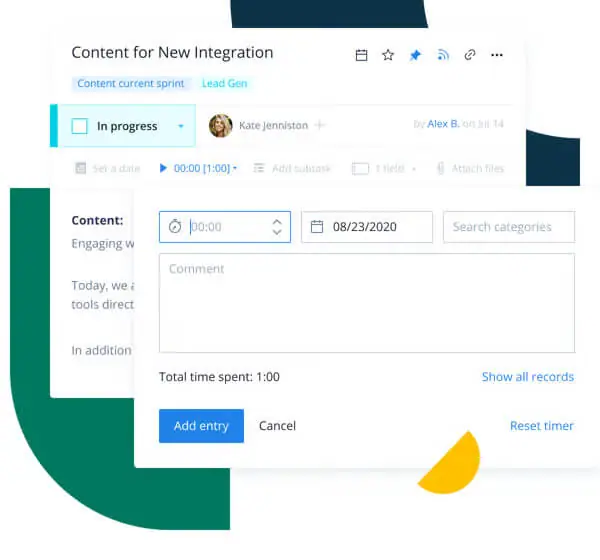
2. Reports and Dashboards
Automated reports that corroborate time tracking and task management data together, and present it all in visual statistics are certainly an essential tool for businesses. Wrike’s reports and dashboards do exactly that for their users.
These features provide users full visibility of their workflows on every level, with many customizable options to design their reports and dashboards however they choose. The dashboards display live data, from project progress to billable hours, which helps users evaluate the performance of their teams.
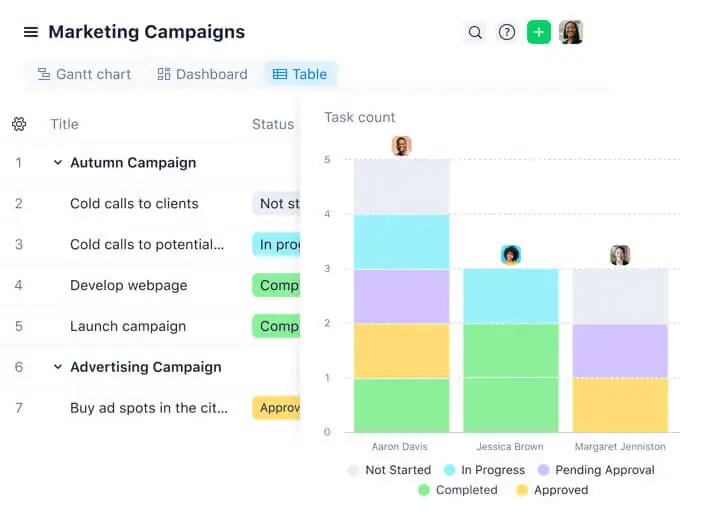
3. Calendar View, Kanban Board, and Gantt Charts
One useful and unique feature of Wrike is its visibility in terms of workflows and how data and internal processes are presented. Users get a wide range of choices, from calendar and table views to kanban boards and Gantt charts.
The Calendar view is efficient for time tracking and project management, as it gives a full birds-eye view of the work processes. Adding to it, kanban boards are great for a simplified and clean organization that keeps employees’ computers and minds free of clutter. Finally, Gantt charts create a timeline of tasks and projects where tasks can be dragged and dropped according to their progress.
 4. Task Management
4. Task Management
Wrike’s dominant task and project management functions reduce users’ workload by giving them one comprehensive platform for all their planning, monitoring, and organization. Projects can be simplified into tasks and tasks into sub-tasks, breaking the work into chunks and preventing overload.
Team collaborations and seamless communication make the sharing of deadlines, budgets, and other necessary information quick and convenient. Everyone stays in the loop of what has been done and what is yet to be completed. Different work views allow users to customize how they want their tasks to be displayed for better organization.
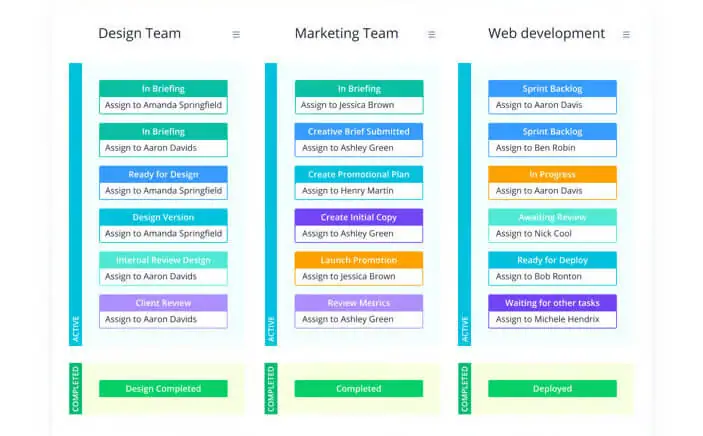
Selected Positive User Feedback:
- “The key to finding a good PM System is finding one that works as you work and Wrike offers so many ways to lay it out (boards, to-do lists, by project, etc.). It is very easy to use and if you set up due dates you know what will be coming due and it will show on your to-do list as well.” – Tammy D. (Source Capterra)
- “The tool offers a central place for campaign management, performance insight, and assets production. I love how Wrike unites marketing and creative teams to enhance productivity and deliver results. You can rely on prebuilt templates to save time.” – Dennis (Source Software Advice)
- “We used to use too many spreadsheets and manila folders to track all of our jobs, which frequently got lost and resulted in staff wandering the office to look for the missing folders. Since we implemented Wrike, we now know the status of all jobs with a click of a mouse!” – Caitlin B. (Source G2)
- “Makes it easy to comment on documents and request revisions.” – Verified User (Source TrustRadius)
- “The interface is simple and intuitive, and the features are incredibly helpful for managing projects and tracking progress.” – Verified Reviewer (Source Capterra)
- “We’ve enjoyed the community feedback aspect of Wrike as well. They take feature suggestions from users and allow others to vote on their usefulness, ultimately becoming a part of the product.” – Nathan (Source Software Advice)
- “We like being able to create custom workflows (statuses), use custom form requests that translate into auto-generated tasks, roadmap with the calendar tool, and separate work between spaces.” – Kelly-Anne S. (Source G2)
- “Pre-built templates, tailored to our unique needs as a department. Helping us to streamline marketing operations without designing processes from scratch.” – Buky Amenet Sule (Source TrustRadius)
- “One of the best features I like most about Wrike is the ability to prepare a Gantt chart. Various formats of charts can be easily prepared using Wrike. Also, the Kanban-style boards are very interesting. In addition, the dashboards are very insightful too.” – Susang R. (Source Capterra)
- “We were very happy to see Wrike had a friendly and very usable interface that non-PM focused users could interact with easily.” – Mike (Source Software Advice)
- “I also love how the task schedule filters make it easy to see information, check start and end dates, and track team member contributions. I enjoy the reports we get and how easy they are to customize because they include the information we want to display, such as a summary of a workflow over time.” – Anurup M. (Source G2)
- “Easily allows for deadlines to be set and approvals to be made.” – Verified User (Source TrustRadius)
- “It does a really good job reminding you of assigned tasks and sending you emails to update progress and/or project goals etc.” – Geli B. (Source Capterra)
- “It has helped us integrate the product with our agile processes, manage our sprints, and generate bespoke dashboards and reporting. Creating bespoke task lists in Wrike allows me to make sure that every portion of the project is performed correctly and on time by every person that has to complete assignments.” – Shayla (Source Software Advice)
- “The intuitive interface allows us to efficiently monitor, organize, and respond to customer requests. It’s excellent that multiple perspectives are available so we can choose how we want the incoming request flow structured for maximum productivity.” – Kenneth C. (Source G2)
Selected Negative User Feedback:
- “The only ‘con’ I have is that it would be nicer to have clarity on what Wrike considers ‘projects’ vs. ‘folders’.” – Tammy D. (Source Capterra)
- “This thing is super confusing to navigate once you start adding multiple projects.” – Anonymous (Source Software Advice)
- “Navigation and switching between tasks when projects are large and have many tasks and sub-tasks.” – Verified User (Source TrustRadius)
- “App crashes suddenly. The automation is poor and even some reports/features are not designed to meet the needs of all companies. The reporting part included in the business packages is not sufficient and it is necessary to switch to much more expensive packages.” – Pietro P. (Source G2)
- “There is a significant amount of learning and coaching required to get up and running properly in Wrike. You WILL need multiple sessions with a Wrike rep to understand all of the functionality and get your groundwork set up correctly to ensure success.” – Nathan (Source Software Advice)
- “The product is priced a little on the higher side. Also, the mobile application is not the best available in the market, and many corrections and enhancements can be made there.” – Susang R. (Source Capterra)
- “Expensive. Limited functionality on Wrike’s mobile application and it crashes suddenly.” – Buky Amenet Sule (Source TrustRadius)
- “You can’t view projects on the kanban board (only tasks), and … skins/themes for the UI are severely lacking (especially with the lack of dark mode).” – Kelly-Anne S. (Source G2)
- “Hard to navigate; As an admin level user for myself it is very easy to get ‘lost’ within Wrike, as I have access to all projects, tasks, and PM features.” – Mike (Source Software Advice)
- “ Although Wrike is great for managing projects and tracking progress, it can become a bit cumbersome when managing large teams and lots of tasks. Additionally, the pricing structure can make it a bit costly for teams that need lots of users.” – Verified Reviewer (Source Capterra)
- “Viewing active, previously active, completed, etc. tasks. It’s never in chronological order.” – Sofia Guerra (Source TrustRadius)
- “Interpreting and comprehending comments for an assignment is more complex, and other team members may need help finding essential data to finish their work efficiently.” – Aaron B. (Source G2)
- “Lack of customizations; There is no way to set task priorities in Wrike’s task management software. It is only important for a task to have a high-priority setting. Because of this, it is difficult to prioritize all project activities and guide team members on which work should be completed first.” – Shayla (Source Software Advice)
- “It is not very easy to use to organize tasks. The tasks are not in order for you to follow 1-10 for example but it rearranges items out of order and makes it hard to follow and monitor progress. Also, wish it had more customization options.” – Geli B. (Source Capterra)
- “Very list heavy, more priority needs to be given to visualization and the single pane of glass for users jumping in and out of Wrike and doing the actual work. Would prefer seeing better ways of using Wrike with KanBan methodologies.” – Anthony S. (Source G2)
Ratings from Other Reviews
(As of 04/12/2023)
- Capterra: 4.3/5
- G2: 4.2/5
- Software Advice: 4.5/5
- TrustRadius: 8.4/10
- Google Play Store: 4.4/5
- App Store: 4.6/5
Final Thoughts
In my opinion, Wrike is a comprehensive platform that facilitates the monitoring of employees’ work hours and tasks. With Wrike’s Time Tracker, users can efficiently manage their resources, placing emphasis on billable hours. Employees can log their worked hours, including breaks, and employers can generate timesheets that showcase daily or weekly time spent.
In addition to its dominant task and project management functions, Wrike reduces users’ workload by providing a comprehensive platform for planning, monitoring, and organization. Projects can be effortlessly streamlined into tasks, and tasks can be further simplified into sub-tasks, enabling users to break their work into manageable chunks and prevent overload.
What I like about Wrike is its organization features, which offer options for viewing tasks in calendar view, Kanban boards, and Gantt charts. Moreover, it enables businesses to track progress and productivity with ease.
However, it must be acknowledged that Wrike is primarily a project management software and only offers basic time tracking functionalities. Additionally, the software can be challenging to navigate, particularly for newcomers to the platform. The numerous features and options can feel overwhelming at times. And although the mobile app remains usable, it does crash sometimes which can be quite frustrating.
To top it all off, in order to access Wrike’s time tracking functionality, companies need to cash out a whopping US$24.8/user/month!
Overall, I think Wrike is suitable for businesses that require a comprehensive project management tool that is cloud-based and flexible enough to handle multiple projects and remote teams. However, those in search of a complete time tracking solution may find Wrike disappointing, owing to its limited time tracking features and expensive price.
Don't waste another minute! Jibble is FREE forever.
Get jibbling with the ultimate time tracking software...
Track time now - it's FREE!

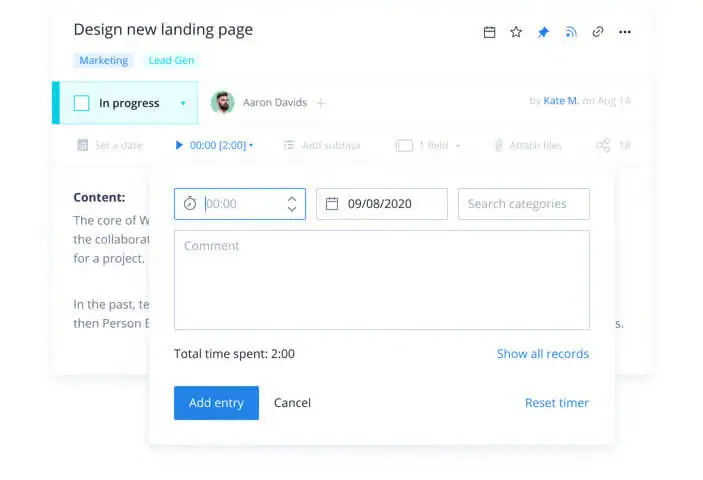 What Users Like
What Users Like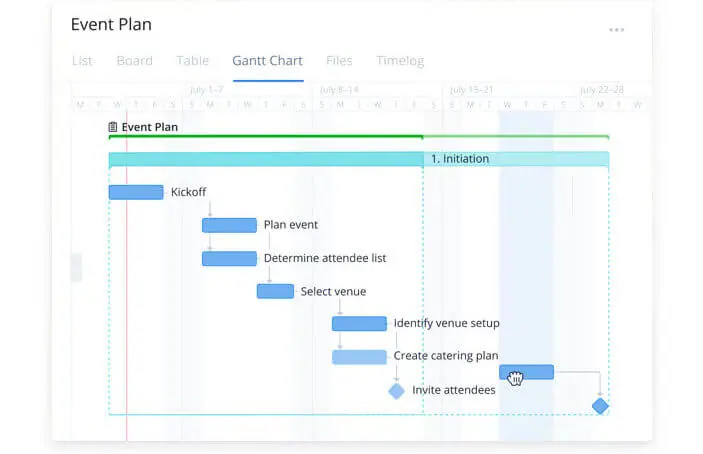 4. Task Management
4. Task Management